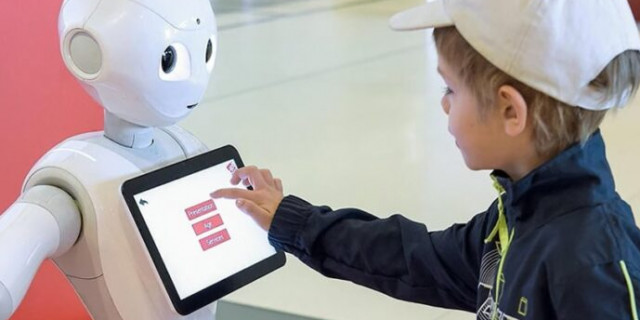AI could be used to help students with learning disabilities stay focused

A robot is being effectively employed to help keep youngsters with learning difficulties focused on their work
Published: 2023-03-11
A robot is being effectively employed by engineering experts at the University of Waterloo to help keep youngsters with learning difficulties focused on their work, says an article in ScienceDaily.com from 2023.
This was one of the main findings of a recent study, which also revealed that both the students and their teachers recognized the robot's positive classroom contributions.
Robotics has a lot of promise for use in the public education system, according to electrical and computer engineering professor Dr. Kerstin Dautenhahn. Overall, the results suggest that the robot benefits the kids.
Dautenhahn has been researching robots in the context of disability for a long time, and his study combines the concepts of equality, inclusion, and diversity.
Further learning assistance, such as one-on-one training and the usage of smartphones and tablets, may be helpful for students with learning impairments.
In recent years, educators have investigated the use of social robots to aid in student learning, although the majority of their study has been on kids with an autism spectrum disorder. The use of socially helpful robots for kids with learning difficulties has thus far received minimal research.
Dautenhahn made the decision to alter this along with two other engineering researchers from Waterloo and three specialists from the Learning Disabilities Association in Vancouver. To do this, they ran several experiments using a little humanoid robot named QT.
According to Dautenhahn, the Canada 150 Research Chair in Intelligent Robotics, the robot is ideal for use with kids who have cognitive impairments since it can make movements with its head and hands along with voice and facial features.
The researchers split 16 kids with learning problems into two groups based on encouraging prior study. In one group, there was only one student and one instructor working together. The pupils in the other group collaborated one-on-one with a teacher and a QT robot. The robot in the latter group was guided by the instructor using a tablet and carried out various tasks on its own using voice and gestures.
While the teacher was in charge of the sessions, the robot guided the student at specific points after being activated by the instructor.
Along with starting the session, the robot also established objectives and offered self-control techniques as needed. The robot employed techniques including games, riddles, jokes, breathing exercises, and physical gestures to bring the learner back on goal when the learning process veered off course.
According to Dautenhahn, students who used the robot to assist them "were usually more involved with their assignments and could finish their duties at a greater rate compared" to those who didn't use one. Additional investigations employing the robot are planned.
The International Conference on Social Robotics in Florence, Italy featured a report on the study, User Assessment of Social Robots as a Tool in One-to-One Educational Environments for Students with Learning Difficulties.